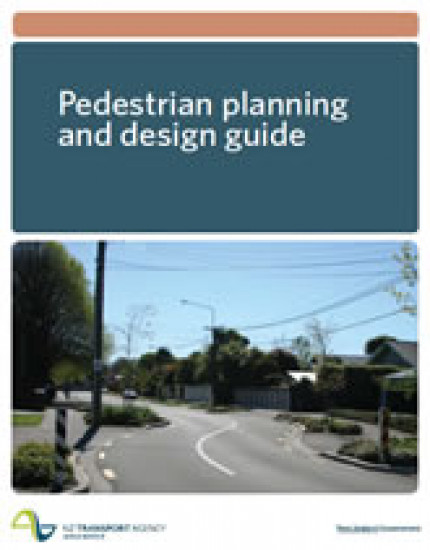The Pedestrian planning and design guide published in 2009, was New Zealand's first comprehensive official guide to planning and design for walking.
|
It has now been superseded by the draft Pedestrian Network Guidance (PNG): |
Some sections of the PNG are still in development and will be released later this year. If you cannot currently find the information you are seeking in the draft PNG then contact the PNG team for assistance (png@nzta.govt.nz).

When creating walkable communities a key challenge is to provide facilities that permit pedestrians to safely and conveniently across roads.
A comprehensive and context sensitive approach is required to consider the appropriate options and select the best one for the circumstances.
An approach that does this is outlined in section 6.5 of the Pedestrian Planning and Design Guide. This requires a detailed consideration of the physical and traffic conditions of the site, the calculation of delays to all users for each appropriate option, and typical crash reductions and costs for these options.
To simplify this process an Excel spreadsheet has been developed that performs the necessary calculations of delay, safety and benefit cost.
The thinking and process used by the spreadsheet is documented in research report Guidelines for the selection of pedestrian facilities [PDF, 327 KB]
This process ensures that the needs of people who wish to walk, cycle or where relevant, ride a horse through a site are considered when works are being planned and designed.
It is based on a method that is compulsory for projects on main highways in England and all road projects for Transport for London.
Unlike a safety audit it is performed within the project team. It involves a process for identifying the issues for these users in context report, then audits the project at appropriate stages for the ways those issues are being addressed.
The document is in interim form and is released for the industry to try out voluntarily, so that we can receive feedback about its use.
This is a recommended standard procedure for gaining pedestrian perceptions of particular walking environments. It is a user satisfaction survey that gives useful and detailed information. It combines an audit process, which provides a list of defects, with rating scales that indicate the level of service perceived by the users and the relative importance of fixing the defects identified.
The results can be fed into a free spreadsheet that will calculate a level of service ratings.
For full details and to download the procedure, visit the Level of Service website(external link).
This survey method is also being used to collect data to research the relationship between user ratings and physical design characteristics and operational variables.
If you are conducting community street reviews we would like to hear from you in advance so we can collect data on the sites being surveyed, contact Tim Hughes.
Updated: 6 Dec 2018